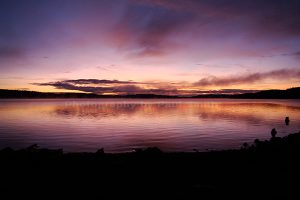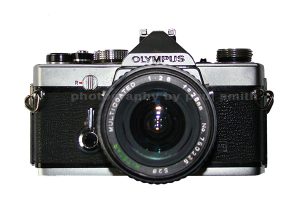Hello and welcome to All Things Photography! Hopefully you will enjoy your visit here and find lots of great information on photography. Photography is such an enjoyable and creative adventure that really gets your juices flowing. You never stop learning and trying different things to increase your learning curve in photography.
Like everything else in this world you will develop your own style based on the techniques you learn. You have the opportunity to learn these skills anywhere including your backyard, community, home, school, woods, work and the zoo.
Everywhere in the world great photo opportunities exist restricted only by your ability to see and capture them. With photography you’re able to capture actions, ecology, emotions, environment, history, memories, serenity and many more various subjects on planet earth.
Throughout the website lies a plethora of information to hone your skills and purchase the right equipment. Learn many photography tips including: Framing, Leading Lines, the Golden Hour, the Golden Triangle, the Rule of Thirds and the Rule of Odds to name a few.
Photography Basics For The Beginner
Practice training your eyes and your brain to see great photo opportunities that include three elements.
These three elements make up a good photograph.
A great photographer will master seeing all three before capturing the picture. In the beginning you should focus on finding photo opportunities that catch your eye. Take the shot, analyze the result and try to identify the three elements listed above.
Which direction is the light coming from? Is it low on the horizon or higher? Do clouds, fog or haze filter the light before it reaches your lens? Does the image follow the rules of composition? Check to see if your horizons are just above or below the center of the image. Also make sure they are level across the frame and not higher or lower on one end.
Make sure your subject isn’t dead center in the image and preferably just to the right or left side of center. After a while you start to see all three instinctively thereby shortening your learning curve. Make sure there is no dead space in your photo and learn how to use the “Rule of Space” effectively.
All Things Foto hopes to help you along the way by providing you with tips, tutorials and everything in between.
So What Is Photography Really

A digital sensor or piece of film in your camera captures light as a kind of art known as photography. A lens attached to the camera redirects the light reflected off of your subject onto the sensor or film. Lenses come as an attachment or built in design for most cameras. Even cell phones today come with a built in camera capable of taking beautiful photos.
After your digital sensor or film inside the camera captures light it reproduces the image seen when taking the photo. You then transfer the captured image to a computer or photo paper for you to adjust or print. Depending on whether you use a digital or film based camera, adjustments and printing uses software or a darkroom.
Photography is as simple as point and shoot or more creative using a tripod and different settings on the camera. Photography is technical and/or creative depending on your preferences.
How Does Photography Benefit The World

Photography serves a purpose in the world by capturing moments in time for history and or prosperity. Photographers in the documentary and news fields capture photos of actual events providing details to the general public. Scientists use photography to identify and retain graphical information about new discoveries. Historians use photography to preserve information for future generations to learn from. The most widely used photography is from hobbyists who capture memories and exploit their creative abilities.
What Are The Most Common Types Of Photography
Many various types of photography exist in the world today limited only by the creativity of your mind. Some of the more popular ones include: commercial, macro, nature, people, pet, space and travel.
- Commercial photography includes taking photos of all products and services in the business world.
- The term “Macro Photography” means taking ultra close up images of your subject. For example, a head shot of a dragonfly or an aphid on the leaf of an apple tree.
- Nature photography covers a vast array of subjects like birds, flowers, insects, landscapes, seascapes, underwater and wildlife.
- Photographing people portrays humans in their everyday life and is probably the most popular.
- Taking photos of your pets is like taking photos of people to create memories that last a lifetime.
- Space photography documents the universe and all its glory.
- Travel photography captures different places in our world that we visit for work or pleasure.
Most digital cameras and smart phones include the ability to capture video of your favorite memories. This has opened up a new world of options for the average photographer. Some of the cheapest professional video cameras are well within the reach of average photographers. The new technology these days makes great quality available for all price ranges.
What Is A Camera And How Does It Work

A camera is a light tight box that captures reflected light through an adjustable hole onto film or a sensor. This adjustable hole called a shutter, opens and closes based on a time frame.
Many different variations of this simple camera type exist along with many complex variations for more experienced photographers. Camera sizes vary in range from small to extra large depending on their usage requirements.
Technological advances have allowed photographers to exceed limitations on what you do with your camera.
The Anatomy Of A Camera
Cameras have at their disposal a range of buttons, extensions and tools which improve their light capturing abilities. Each perform a distinct function to aid or improve the art of capturing an image onto the film or sensor.
Depending on the manufacturer, each tool is located in a way that makes it easier to find and use efficiently. Software built inside today’s newer digital cameras uses menus to find and configure most tools. The older non digital cameras operated on mechanical principles to ensure tools functioned properly.
Aperture Control
In the older non digital cameras the aperture is usually located as an adjustable ring on the lens. You would look through the view finder where the light meter resides and adjust the aperture ring accordingly.
The newer digital cameras use computer power to adjust the aperture through a menu built into the camera. Powered by a rechargeable battery, a mother board provides the necessary settings for camera operation.
Shutter Control
Shutter control in older non digital cameras was located somewhere at or near the top of the camera. It usually combined the ISO or Asa rating and shutter speeds in one rotating button with two configurations.
Digital cameras sometimes provide a button for this also or include a setting in the menu. It all depends on the camera manufacturer which feature you receive.
Your camera shutter is the device that opens and closes to allow light to enter and land on the film or sensor. When you push the shutter button it opens at variable speeds thereby allowing the film or sensor to capture it. Depending on the shutter speed chosen it will only open for a certain duration of time. Therefore a longer duration of time allows the light to remain on the film or sensor longer. Used in combination with the aperture you gain more control over the quality of the subject you try to capture.
Lens
Lenses provide a added way of focusing light into the camera and onto the film or sensor. They do this through an adjustable hole known as an aperture.
The most common apertures consist of f-numbers (f-stops) ranging from 1.4 to 22. Sometimes its confusing because the smaller the f-stop the larger the aperture opening.
Flash
In the older days a hot shoe on top of your camera is where you placed your flash. A pivot in the flash base allows you to point up or down, left or right and straight at your subject. Therefore allowing you to direct the light like bouncing it off the ceiling to create softer illumination on your subject.
Today’s newer cheaper cameras have flashes built in with automated control based on exiting ambient light. More expensive cameras still allow for adding flashes to a hot shoe for better control and creativity.
